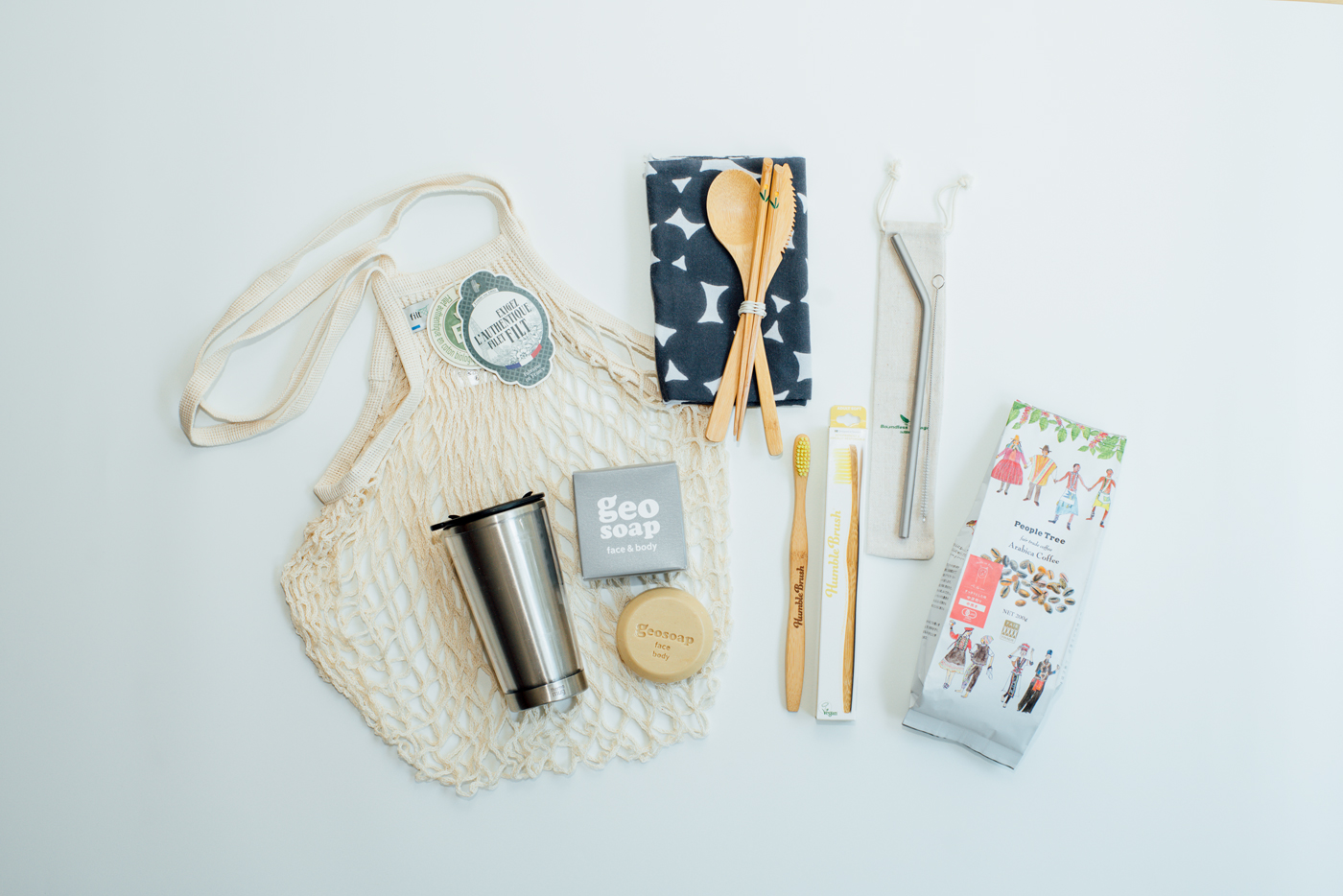
We begin to hear the word “ethical” more and more often these days. The term is used to refer to considerations we make toward issues such as poverty and environmental destruction. We engage in some forms of consumption every day, be it buying / using goods, traveling or eating. Acts of consumption that pays consideration to associated people, society and the environment, are now called “ethical consumption.”
For example, choosing to use organic soap, shampoo or detergent designed to prevent domestic wastewater from polluting rivers and oceans, is a form of ethical consumption for the environment.
Using one’s own eco-bags, drink bottles and chopsticks mitigates the amount of waste generated. More recently, the massive amount of plastic waste has directed people’s attention to the use of plastic straws and toothbrushes, with many opting to switch to their personal straws and toothbrushes with wooden handle. Another example of ethical consumption is to go for “fair trade” options when buying coffee, chocolate and other products typically produced in so-called developing countries, knowing that farmers involved in producing those items have been paid a fair price and are not forced into extremely severe working environments. Casting a thought over background factors in producing goods for consumption and what happens even after the goods are consumed… There are many things you can do in our day-to-day life as a first step toward establishing ethical living for a better future.

KAMAWANU is no exception in exploring an ethical way of consumption. Amidst growing concerns about the disposal of a massive amount of clothes, textiles and other resources, we are not free from the issue of merchandise waste. What should be done with Tenugui with slight dyeing imperfections? The answer is to apply the “over-dye” technique.
Out of numerous dyeing options, KAMAWANU chose “mud dyeing,” a traditional technique of Amami Oshima Island, Kagoshima Prefecture.
Yeddo hawthorn tree (a.k.a. te-chi tree), which grow wildly on the island, is chopped into small pieces and boiled down to prepare liquid stain (rich in tannin) for dying fabric. Dyed fabric is then immersed in local mud (rich in iron), which triggers a chemical reaction to set the dye in a dark color. This is a unique dyeing technique, only found in the island of Amami Oshima.
The spent Yeddo hawthorn woodchips are used as fuel, and their ashes can then be reused for dyeing, making it a very ecological process. It is almost a miracle based on nature’s blessing and human wisdom, only using readily-available elements including wood pieces, mud and water.
The resulting grey overtone, applied to colorful patterns on Tenugui, gives a fresh appeal.
In conjunction with Amami Oshima’s dyeing studio, Kanai Kogei, KAMAWANU runs irregular workshops for mud-dyeing Tenugui.
The first step is to rub Yeddo hawthorn tree stain into raw fabric. It is then soaked in alkaline lime solution to neutralize and promote the dyeing process. In the olden days, when lime was not readily available, local people used crushed pieces of burnt coral, another example of Amami Oshima’s unique nature and human wisdom. The final process is to immerse the fabric in mud. Repeating this process gradually turns the fabric to brown/black.
The workshop is aimed at familiarizing people with dyeing, and making them realize that stained clothes or other items can be dyed to add a fresh charm and make them wearable again. This is the value that we would like to share with everyone.
Tenugui over-dyed in mud in Amami Oshima in a collaboration between KAMAWANU and Kanai Kogei, is due to be released in 2020.
